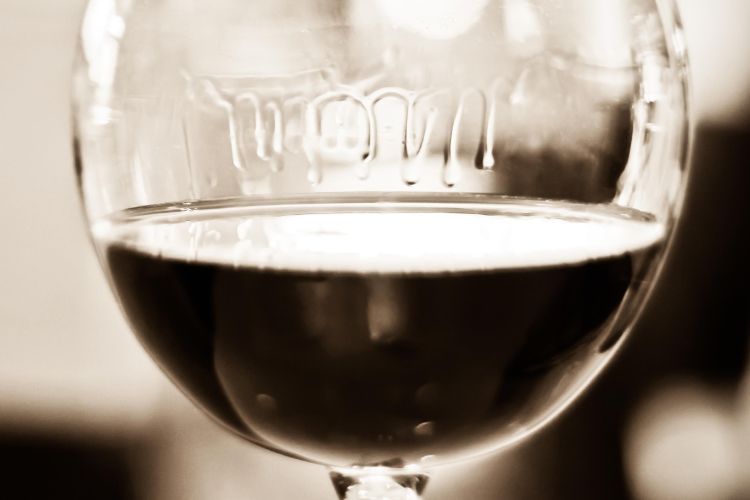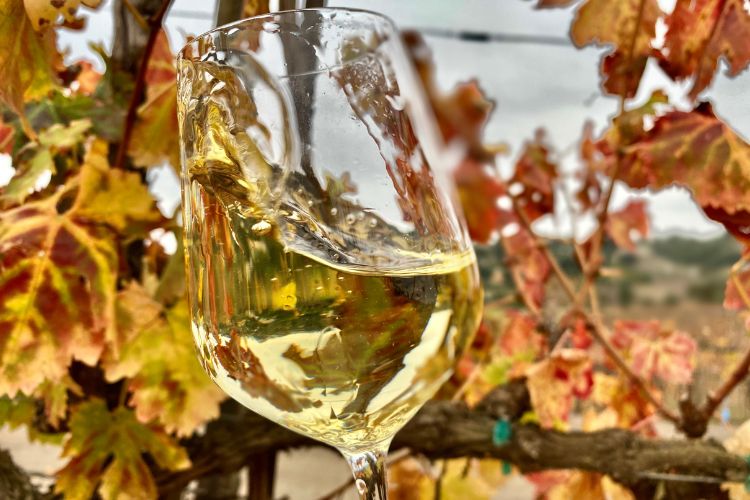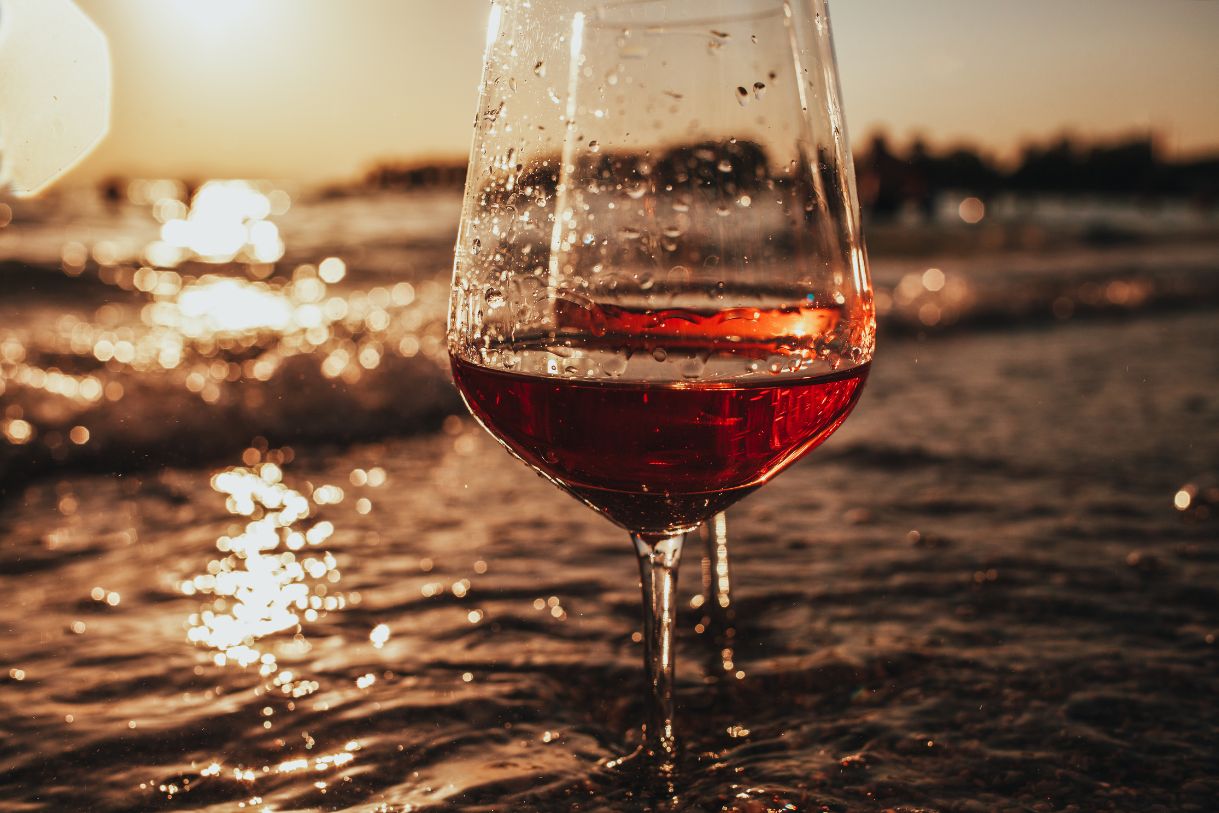What are Wine Legs?
See those translucent “wine legs” or “wine tears” meandering their way down the inside of your wine glass? Wine legs actually occur because of a neat phenomenon, and it has nothing to do with how “thick,” “chunky” or sediment-packed a wine is. Separately, wine legs are not an indication of quality.
- What are Wine Legs?
- What Causes Wine Legs?
- What do Wine Legs Tell You?
- Watch NASA Study the Gibbs-Marangoni Effect in Space
- Misconceptions About Wine Legs
- Other Visual Aspects of Wine Tasting
- Wine Legs in Different Types of Wines
- Experimenting With Wine Legs
- Historical Perspective of Wine Legs (The Gibbs-Marangoni Effect)
- Frequently Asked Questions about Wine Legs or Tears of Wine
What Causes Wine Legs?
The main ingredients for those sexy legs are (drumroll…) alcohol, evaporation, water and surface tension.
Tears along the inside of a wine glass are a manifestation of the Gibbs-Marangoni Effect. This effect, as it relates to wine, is the tendency for ethanol to evaporate from the wine where the surface fluid comes into contact with the inside surface of a wine glass.
As the alcohol evaporates, the surface tension of the wine around the glass increases. Nature tells us that areas in liquid with a lower concentration of alcohol will yank on the surrounding fluid. The remaining fluid (primarily alcohol and water) rushes to fill the ‘void’ in an effort to lessen the tension.
This cycle will continue as long as the wine is exposed to open air. The remaining ethanol and water-wine mixture will adhere to the inside of your glass as you sip and swirl, until it collapses under its own weight. The end result of the Gibbs-Marangoni effect are those tears of wine (joy) you see around your glass.
RELATED: How To Taste Wine Properly Step-By-Step

What do Wine Legs Tell You?
More Alcohol in Wine = More Legs
The higher the alcohol content of a wine, the longer, fatter legs you’ll get to see. That’s because more ethanol is evaporating at any given time, causing relatively large quantities to collect, and ultimately collapse under gravity.
More Sugar in Wine = Slower Legs
While sugar content throughout fermentation determines how much alcohol a wine will ultimately have, residual sugar in wine has nothing to do with the number or size of legs you see. It does, however, slow the speed at which wine tears drop. Higher sugar content means a denser liquid, causing higher surface tension and attraction.
RELATED: 15 Must-Have Accessories and Gifts For Wine Lovers
Watch NASA Study the Gibbs-Marangoni Effect in Space

Misconceptions About Wine Legs
Have you ever glanced at your wine glass, marveled at those mesmerizing legs, and thought, “Wow, this must be an exceptionally good wine!”? Well, let’s burst that bubble, shall we? Contrary to popular belief, wine legs aren’t some magical indicators of a wine’s quality, price tag, or a secret signal that you’re sipping on a liquid equivalent of a unicorn.
Now, I know, it’s a bummer. Those streaks have an undeniably seductive allure, and it’s easy to get caught up in the romance of it all. I mean, who wouldn’t want to think that more legs mean a more sophisticated wine, right? But alas, the truth is less glamourous. Wine legs are all about physics and chemistry – the interplay between alcohol, water, evaporation, and surface tension. So, the next time you find yourself entranced by those beautiful wine legs, remember they’re telling you about alcohol content and evaporation, not whether you’ve scored a bottle that’s going to impress your wine-snob friend. Now, isn’t that just grape to know?
Other Visual Aspects of Wine Tasting

While the dance of wine legs can be quite captivating, it’s not the only visual spectacle that a glass of wine offers. Think of it as one act in a multi-part drama that is wine tasting. Let’s take a moment to shine a spotlight on some of the other key players: color, clarity, and viscosity.
Picture the scene: You’ve poured a glass of wine and there it sits, like a jewel in the glass. Its color is the opening line of its story. From vibrant ruby reds of young wines to the subtle brick hues of aged ones, from light straw-like whites to deeper golden tones, and from the palest salmon to the most vivid raspberry of rosés, color hints at age, grape variety, and the climate in which the wine was born. It’s the first impression, setting the stage for what’s to come.
Now, let’s bring clarity into the scene. Clarity is like the transparency of the plotline. A clear wine suggests a careful filtration process, while a slightly hazy one may indicate a natural, unfiltered wine. Neither one is a spoiler; it just gives a glimpse of the winemaking style.
Finally, notice the viscosity, visible as you swirl the wine in your glass. This suggests the wine’s body, alcohol content and/or sweetness, another layer of intrigue in our tasting story.
Wine Legs in Different Types of Wines
Now that we’ve demystified the art of observing wine legs and toured through the visual elements of wine tasting, it’s time to dive a little deeper. Because the truth is, not all wine legs are created equal. Just as red, white, rosé, and fortified wines offer us an array of flavors and aromas, they also bring their own twist to the tale of wine legs.
Take red and white wines, for instance. They might be the yin and yang of the wine world, but when it comes to wine legs, it’s all about the alcohol content. Remember how we said more alcohol equals more legs? That means a high-alcohol red wine will strut its stuff with a display of legs that can give a spider a run for its money. A lower-alcohol white, on the other hand, might play it coy, with fewer, more subtle legs. But don’t be fooled by their shyness – those legs are still telling you a story.
Rosé wines, with their range of styles and alcohol levels, can show a real variety of legs, from sparse and slow-moving to plentiful and fast. But let’s not forget about fortified wines. These potent potables, with their high alcohol and often high sugar content, put on a veritable cabaret of wine legs. Their legs can be both plentiful and slow-moving, due to the combination of elevated alcohol and sugar.
Experimenting With Wine Legs
Get ready to unleash your inner scientist because we’re about to conduct a fun, enlightening experiment with wine legs – right in the comfort of your home. Don’t worry, there will be no test tubes, Bunsen burners, or safety goggles involved. Just you, a couple of different wines, and your spirit of curiosity. Ready? Let’s get experimenting!
First things first, grab a few different types of wine from your collection – say, a robust red, a crisp white, a playful rosé, and maybe even a fortified wine if you have one. Pour each into a clear wine glass, ensuring the glasses are clean and dry. Now, hold up each glass against a white background – a blank piece of paper or a plain tablecloth will do. This will help you clearly see the color of the wine. Give each glass a gentle swirl (being careful not to spill!) and watch as the wine legs form. Notice the differences in the number, speed, and thickness of the legs between the different types of wine. Remember, this all speaks to the alcohol and sugar content of each.
As you observe, ask yourself: Which wine produces the most legs? Which ones have the slowest? The fastest? The thickest? The thinnest? This isn’t just a fun experiment, it’s an engaging way to better understand and appreciate your favorite beverage. And remember, while wine legs might not tell you about a wine’s quality or price, they do tell a tale of chemistry, and how different components interact to create unique characteristics.
Historical Perspective of Wine Legs (The Gibbs-Marangoni Effect)
Now, let’s get back to the science and step into the wine time machine and journey back to the origins of our beloved wine legs. Even though wine has been enjoyed for thousands of years, the phenomenon of wine legs was first formally described in the mid-19th century. The Gibbs-Marangoni Effect, named after physicists Josiah Willard Gibbs and Carlo Marangoni, was the scientific explanation behind this beautiful occurrence. These pioneers of fluid dynamics gave us the language to explain what we now casually observe in our wine glasses.
Over the years, understanding of wine legs has evolved, shifting from a mere curiosity to an engaging way to appreciate the physical and chemical properties of wine. It became a part of wine lore and wine education, yet always maintaining its fascinating blend of art and science. And, while the effect of wine legs on wine quality has been debunked, their significance in understanding a wine’s composition remains relevant. In our modern times, we see wine legs as an integral part of the wine tasting experience – a dance of science in every glass, testament to the rich and evolving history of our understanding of this remarkable beverage.
When’s the last time you had a nice wine with an elevated alcohol content? What’s your favorite wine with long legs? Let us know in the comments, we’d love to try them!
Frequently Asked Questions about Wine Legs or Tears of Wine
f you enjoyed this guide, consider joining the Facebook Group to interact with other Winetravelers and for wine travel inspiration around the world. Be sure to follow us on both Twitter and Instagram to stay up to date with our trending content.
You are reading “What are “Tears of Wine” or “Wine Legs?” Back To Top
wine tears meaning, tears of wine surface tension, wine science, gibbs-marangoni effect, alcohol in wine, wine legs alcohol content: educational wine articles

[…] in a bowl of milk and create a tie-dye effect when you add soap, or why wine appears to leave “tears” behind in your glass as you drink: Liquids move from areas with low surface tension to areas with high […]
[…] in a bowl of milk and create a tie-dye effect when you add soap, or why wine appears to leave “tears” behind in your glass as you drink: Liquids move from areas with low surface tension to areas with high […]
[…] in a bowl of milk and create a tie-dye effect when you add soap, or why wine appears to leave “tears” behind in your glass as you drink: Liquids move from areas with low surface tension to areas with high […]
[…] in a bowl of milk and create a tie-dye effect when you add soap, or why wine appears to leave “tears” behind in your glass as you drink: Liquids move from areas with low surface tension to areas with high […]
[…] in a bowl of milk and create a tie-dye effect when you add soap, or why wine appears to leave “tears” behind in your glass as you drink: Liquids move from areas with low surface tension to areas with high […]
[…] in a bowl of milk and create a tie-dye effect when you add soap, or why wine appears to leave “tears” behind in your glass as you drink: Liquids move from areas with low surface tension to areas with high […]
The effect is also very much influenced by temperature and the cleanness of the glass, so you’ll have to compare two glasses of different wines, with all circumstances equal.